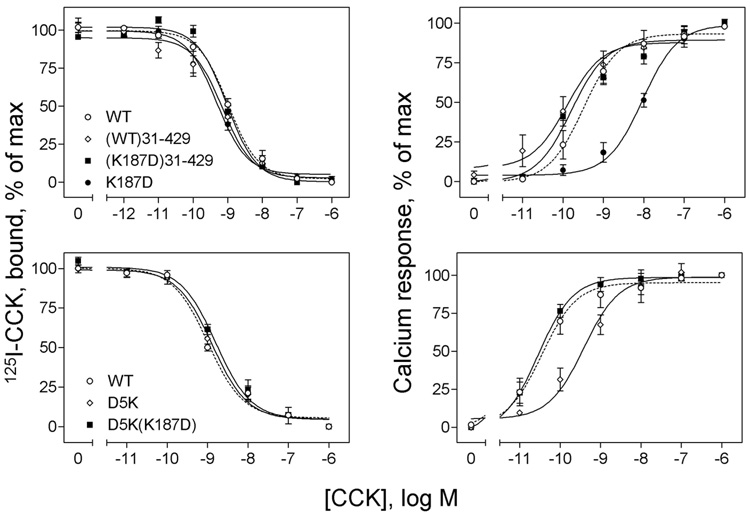FIGURE 6.
Effects of truncation and site mutation of the amino terminus of the K187D mutant CCK receptor construct on their peptidyl ligand binding and biological activity. Left, curves for CCK to compete for binding of the 125I-CCK radioligand to membranes from CHO cells expressing the truncated WT ((WT)31–429) and K187D ((K187D)31–429) CCK receptor constructs (top) and membranes from COS cells expressing the site mutants, D5K and D5K(K187D) (bottom). As controls, data from WT and K187D are also shown. Ki and Bmax values are shown in Table 1. Right, curves of intracellular calcium responses in these cells to increasing concentrations of CCK. Data are presented as means ± S.E.M. of data from a minimum of three independent experiments. Basal levels of intracellular calcium in CHO cells were similar for all the constructs (147 ± 28 nM), and maximal levels achieved after stimulation with CCK reached 380 ± 40 (WT), 375 ± 36 ((WT)31–429) and 387 ± 49 ((K187D)31–429) nM. There were no significant differences in basal and maximal intracellular calcium levels for any of the CCK receptor mutants expressed in COS cells. In those cells, basal levels of intracellular calcium were 166 ± 34 nM, and maximal levels achieved after stimulation with CCK were 268 ± 43 nM. EC50 and Emax (delta change from basal) values are shown in Table 1. These data suggest that neither truncation nor site mutation of the amino terminus of the K187D mutant CCK receptor had any effect on peptidyl ligand binding, while both completely restored the intracellular calcium responses to CCK.

